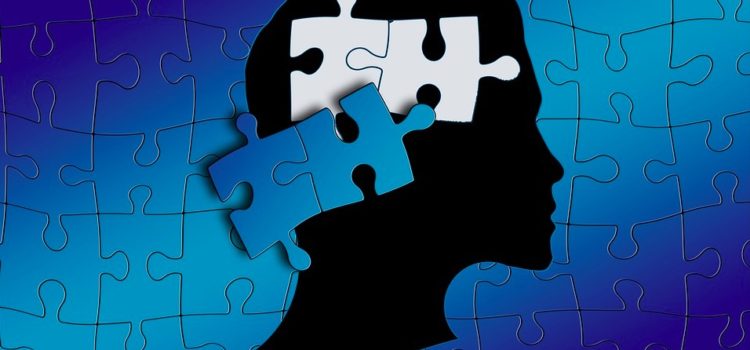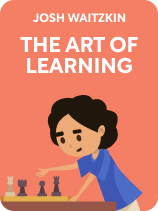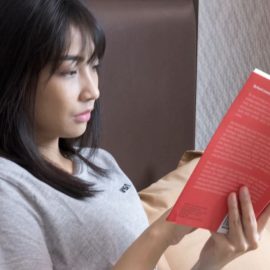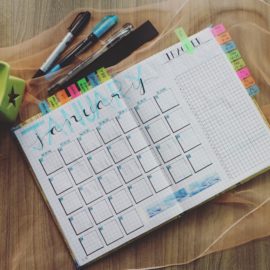

This article is an excerpt from the Shortform book guide to "The Art of Learning" by Josh Waitzkin. Shortform has the world's best summaries and analyses of books you should be reading.
Like this article? Sign up for a free trial here .
What is the chunking study method? What makes chunking such an effective way to learn?
In the context of learning, chunking is where you learn the basic elements of a skill, then combine them into compound skills. Learning via chunking enables you to perform more complex skills with intuitive ease, executing multiple elements in tandem.
Learn about the chunking learning method, why it works, and how to implement it.
Develop Chunks of Skillfulness
When you use the chunking learning method, your mind takes multiple basic elements, finds how they relate according to the principles of your skill, and integrates them into one unit. Then, you intuitively access and employ that chunk of skills.
For example, the chunk for an A minor 7th piano chord encodes how each note relates to the others, and the player can access it as one intuitive piece of information.
(Shortform note: In A Mind for Numbers, Barbara Oakley explains that chunking is a key feature of human memory. As we take in information, our brains work to assemble it into coherent clusters of memory. Three or four pieces of information—like the three notes of a piano chord—becomes one chunk. And like Waitzkin, Oakley argues that deeply chunked or integrated information becomes intuitive, allowing you to access it with little or no conscious effort.)
As you learn how the elements of your skill relate, each additional chunk yields instinctual know-how that builds into a powerful network of intuitive skillfulness. For example, you’ve got chunks for the English language—words, grammatical patterns, sentence constructions, and so on—that you are using right now to understand this guide.
Chess is harder to parse than language. But Grandmasters, Waitzkin explains, can look at the board and see all the patterns: How this pawn relates to that bishop, how the bishop relates to that rook, how a cluster of pawns relates to both bishop and rook, and so on. Like you effortlessly read English, the Grandmaster reads a chess board.
(Shortform note: In chess, players use chunking to parse the board. In writing, writers use chunks to write readable pieces. Since working memory can hold two or three chunks at a time, complex sentences are harder to read. They require more cognitive resources to properly process, and by the time the writer gets to their point, we’ve forgotten how all the clauses built up. On the other hand, writing that’s direct and concise helps readers to absorb and retain the information, since brief, succinct sentences are much easier to parse.)
Layer Chunks Into a Network of Skills
Until you make a connection between two bits of information, Waitzkin says, it takes more effort to understand how they relate. He compares this to hacking through dense forest to create a new path between two clearings. The first pass is the hardest, but once you’ve made the connection it becomes easier. Travel that path frequently enough and you’ll clear the way, making passage effortless. This is how you connect two bits of information, creating a small chunk.
(Shortform note: In the brain, thousands of new neurons arise in the adult hippocampus each day. These neurons are initially at risk, but you can retain them by engaging in “effortful learning.” In other words, by concentrating intensely on learning some skill, such as chess or poker. This integrates the new neurons with existing neurons, helping to keep your brain fit and, eventually, creating smooth paths that correspond to skillful grasp of your discipline—similar to the forest-clearing metaphor that Waitzkin uses.)
As you train, you create layers and layers of chunks in your brain. For example, when learning English, you first learn the letters of the alphabet and their individual sounds. Then you begin chunking those letters to form new sounds, such as “c” and “h” to make “ch.” You begin forming words, then sentences, paragraphs, and so on. Each time you synthesize elements, you create a new chunk in your mind that eventually becomes intuitive.
(Shortform note: Here Waitzkin isn’t clear about the how of integrating so much information—he simply emphasizes the length and intensity of his own labors. This raises the question of explicit versus implicit strategies: Can you systematize the whole learning experience, or does at least part of it have to happen by “osmosis”? Language learning again exemplifies this dichotomy. Some believe that the right method involves workbooks, formal classes, and at-home study; others insist that learning via immersion is superior. With immersion, you rely on your brain to work out the principles and patterns of your skill without conscious effort, as opposed to learning them explicitly.)

———End of Preview———
Like what you just read? Read the rest of the world's best book summary and analysis of Josh Waitzkin's "The Art of Learning" at Shortform .
Here's what you'll find in our full The Art of Learning summary :
- Life advice from chess prodigy and tai chi World Champion Josh Waitzkin
- Detailed looks at the psychological and technical sides of skill-building
- How to build any skill from the bottom-up






